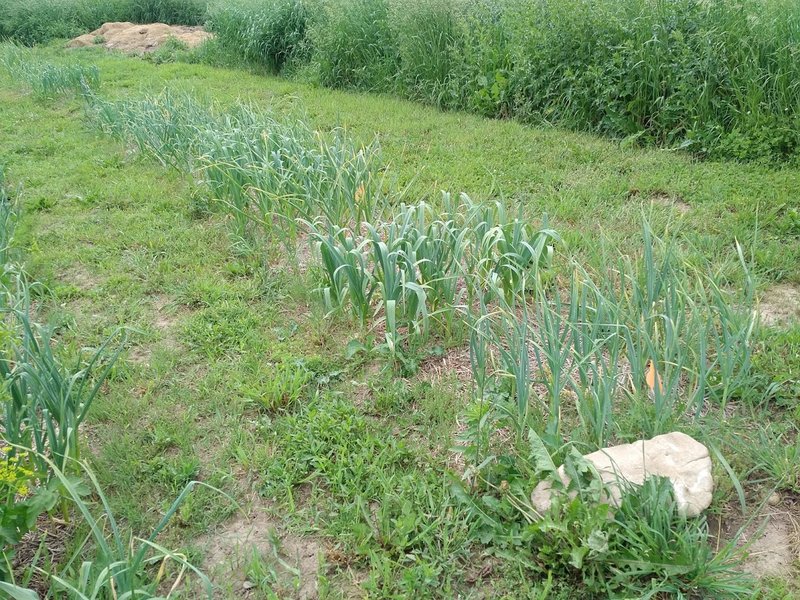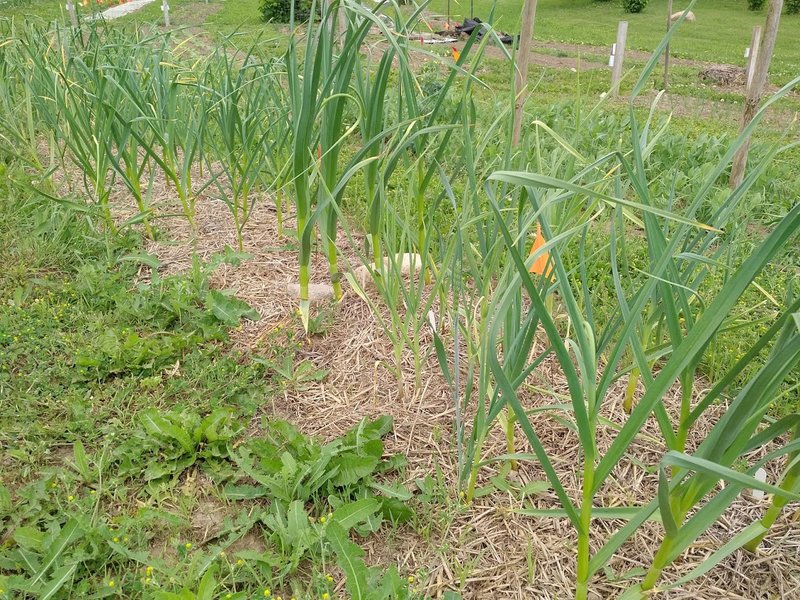Seeds of Diversity's Garlic Collection

Bob Wildfong
Even that number is only a fraction of the garlic varieties that our members grow all across Canada, which is great. We actually don't want to keep all our garlics in one place - they should be grown in as many different places as possible. The reason is not just for easy access, but mainly because a garlic collection is always at risk. We can't put garlic in a freezer, as we do with seeds like beans, tomatoes, and oats. Garlic has to be grown continuously, so it is impossible to protect from the elements, unless it is duplicated in many different places.
Garlic originated somewhere in mid-Asia, but no one knows exactly where because it has been grown and used for such a long time. It was well-known in ancient China and India, as well as by the Egyptians and Sumerians. All we know for certain is that there are hundreds if not thousands of strains that could be hundreds if not thousands of years old, all passed from gardener to gardener through all that time for food and medicine.
Our garlic varieties have names that reflect this ancient and wide-spread history: Acropolis Greek, Korean Purple, Russian Giant, and Persian Star; as well as some that sound more modern but are likely to be old varieties that are re-named: California Early, Gaia's Joy, and Fish Lake 23.
How We Grow Them

We grow 24 plants of each variety each year. That means we split the bulbs in fall and plant 24 cloves of each variety. Some varieties have only 4 cloves in each bulb, and some have as many as 20, so with some varieties we have more leftovers than others. Our garlic is mulched with straw, which has several advantages: the straw helps prevent weeds, and it also keeps the soil moist and cool which garlic likes best.
Normally, growers remove the "scape", or the flower stem, in mid to late June because the flower takes growth away from the bulb. Besides, the green scapes are delicious. We, however, let the scapes mature because they produce tiny bulbs (called bulbils) that can be planted to grow more garlic.
Bulbils take two years to grow a full-size garlic plant, but they are much easier and less expensive to mail, and they don't contain insects or soil-borne diseases that can sometimes be transmitted with bulbs. We harvest many thousands of bulbils from our garlic, and offer them for sale to our members in August each year. (Look for the notice in your August e-bulletin!)
The Garlic Hospital

Sometimes we don't have 24 cloves to plant, either because of an earlier problem or because we received a small quantity of a new variety. The "garlic hospital" is a special plot where we put those high-priority varieties, especially those that we can't find anywhere else. It helps to keep a close eye on them.
Thanks For Your Donations
It doesn't take much work to grow garlic, especially if you have good mulch. Just the same, there are costs of transporting and labeling all those varieties, and coordinating the program. We manage to keep the collection running on donations from our members, and we appreciate your support so we can keep these varieties alive and available.
As well, a great big thank you to KW Habilitation for allowing us to use their David Fisher Residence garden at no charge, to grow out our garlic collection for the past few years.
**
Bob Wildfong is Seeds of Diversity's executive director
Not yet a member?
An annual membership to Seeds of Diversity gives you access to our seed exchange, seed grow-out programs, and our online news.

We depend on donations to do our work.

Thank you for your support!
